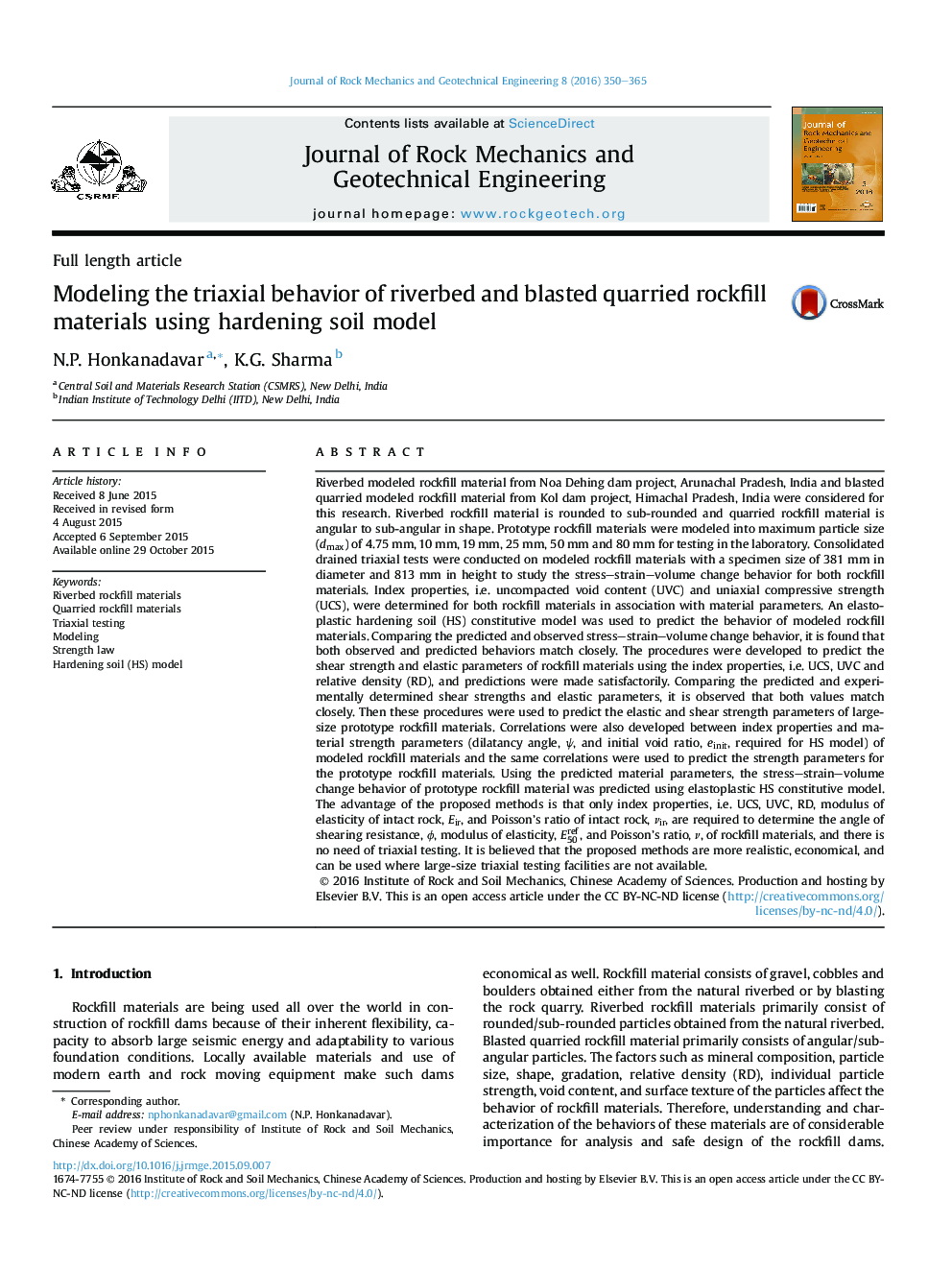| کد مقاله | کد نشریه | سال انتشار | مقاله انگلیسی | نسخه تمام متن |
|---|---|---|---|---|
| 286490 | 509484 | 2016 | 16 صفحه PDF | دانلود رایگان |
Riverbed modeled rockfill material from Noa Dehing dam project, Arunachal Pradesh, India and blasted quarried modeled rockfill material from Kol dam project, Himachal Pradesh, India were considered for this research. Riverbed rockfill material is rounded to sub-rounded and quarried rockfill material is angular to sub-angular in shape. Prototype rockfill materials were modeled into maximum particle size (dmax) of 4.75 mm, 10 mm, 19 mm, 25 mm, 50 mm and 80 mm for testing in the laboratory. Consolidated drained triaxial tests were conducted on modeled rockfill materials with a specimen size of 381 mm in diameter and 813 mm in height to study the stress–strain–volume change behavior for both rockfill materials. Index properties, i.e. uncompacted void content (UVC) and uniaxial compressive strength (UCS), were determined for both rockfill materials in association with material parameters. An elastoplastic hardening soil (HS) constitutive model was used to predict the behavior of modeled rockfill materials. Comparing the predicted and observed stress–strain–volume change behavior, it is found that both observed and predicted behaviors match closely. The procedures were developed to predict the shear strength and elastic parameters of rockfill materials using the index properties, i.e. UCS, UVC and relative density (RD), and predictions were made satisfactorily. Comparing the predicted and experimentally determined shear strengths and elastic parameters, it is observed that both values match closely. Then these procedures were used to predict the elastic and shear strength parameters of large-size prototype rockfill materials. Correlations were also developed between index properties and material strength parameters (dilatancy angle, ψ, and initial void ratio, einit, required for HS model) of modeled rockfill materials and the same correlations were used to predict the strength parameters for the prototype rockfill materials. Using the predicted material parameters, the stress–strain–volume change behavior of prototype rockfill material was predicted using elastoplastic HS constitutive model. The advantage of the proposed methods is that only index properties, i.e. UCS, UVC, RD, modulus of elasticity of intact rock, Eir, and Poisson's ratio of intact rock, νir, are required to determine the angle of shearing resistance, ϕ , modulus of elasticity, E50ref, and Poisson's ratio, ν, of rockfill materials, and there is no need of triaxial testing. It is believed that the proposed methods are more realistic, economical, and can be used where large-size triaxial testing facilities are not available.
Journal: Journal of Rock Mechanics and Geotechnical Engineering - Volume 8, Issue 3, June 2016, Pages 350–365
